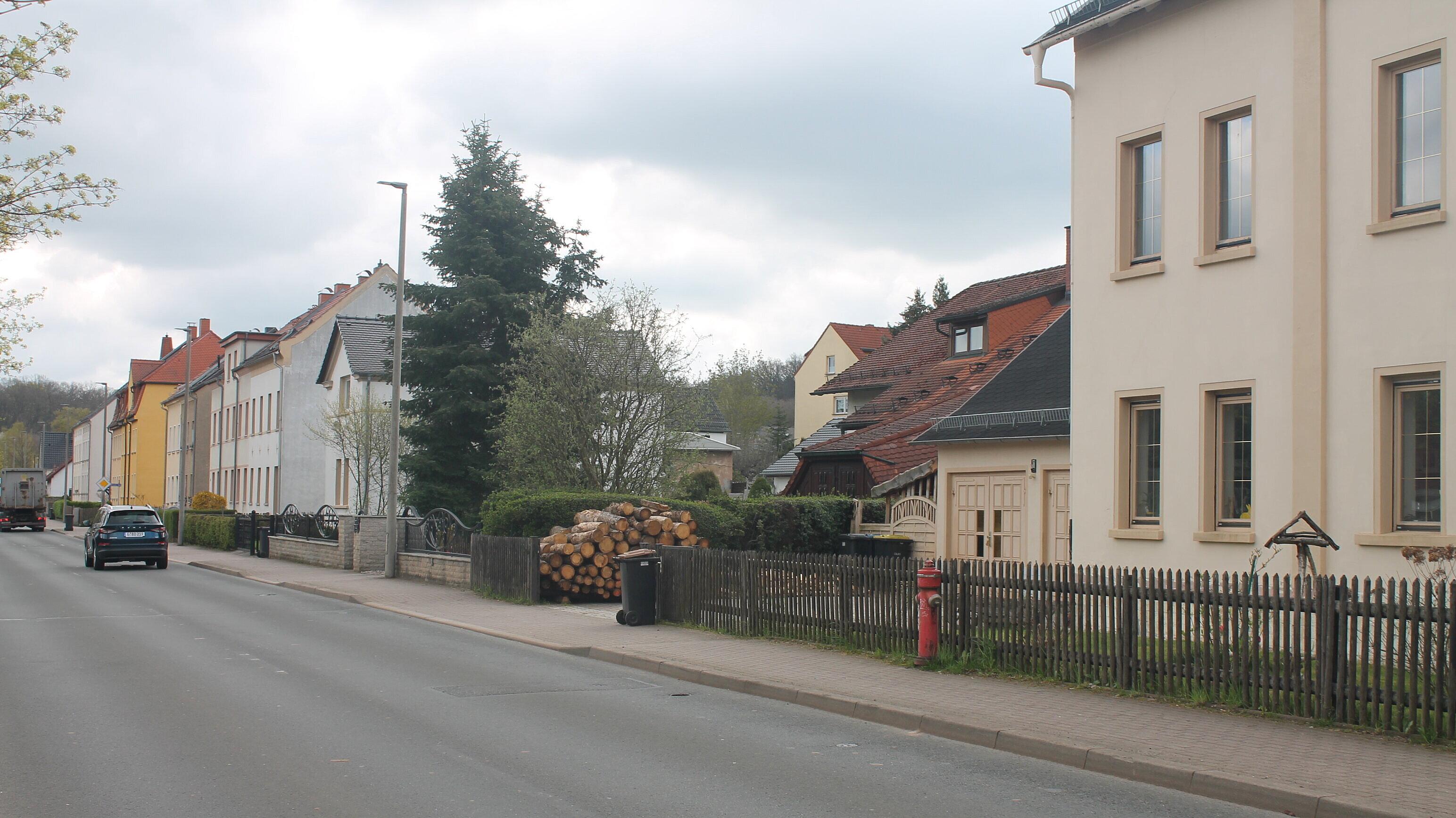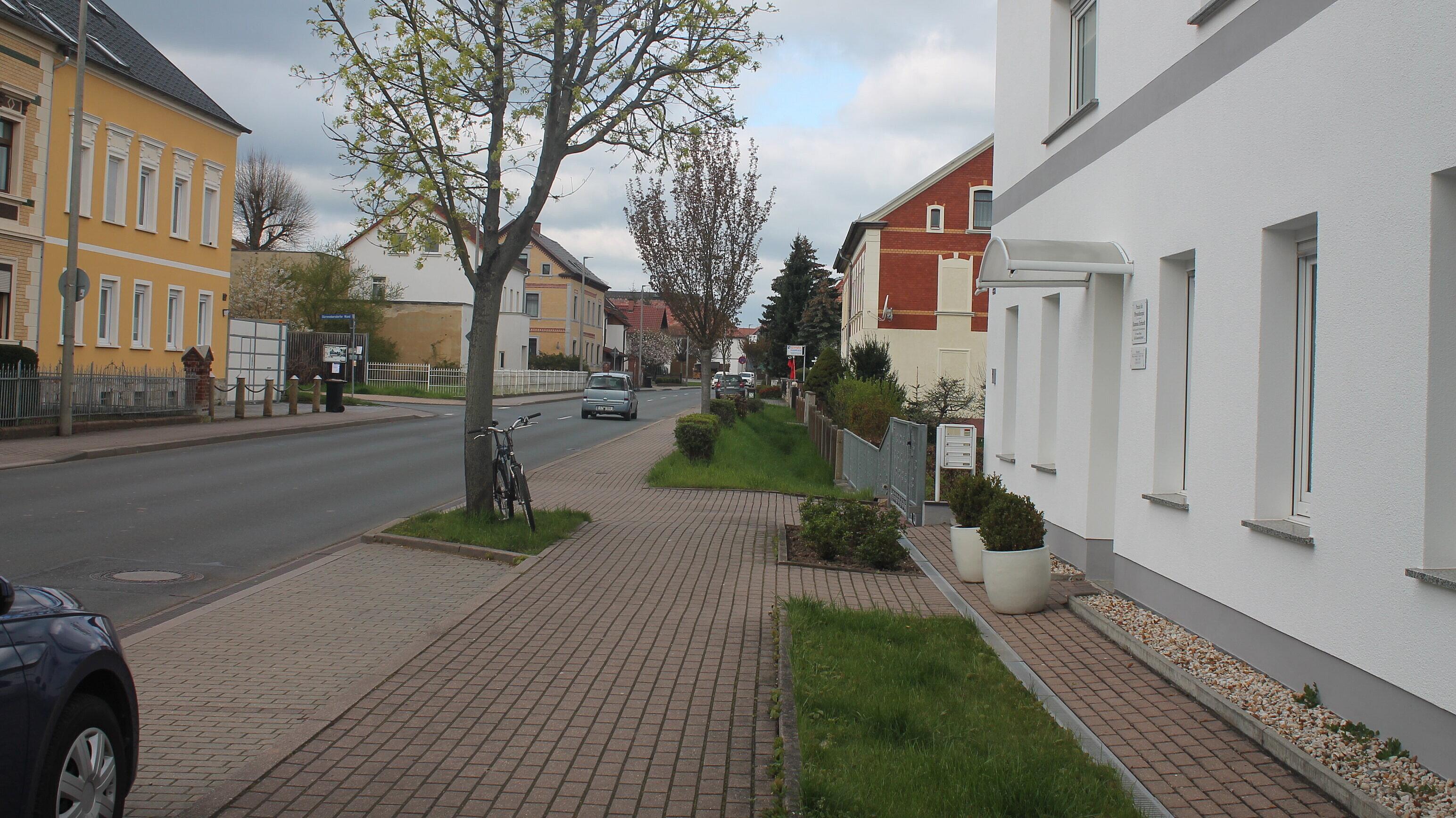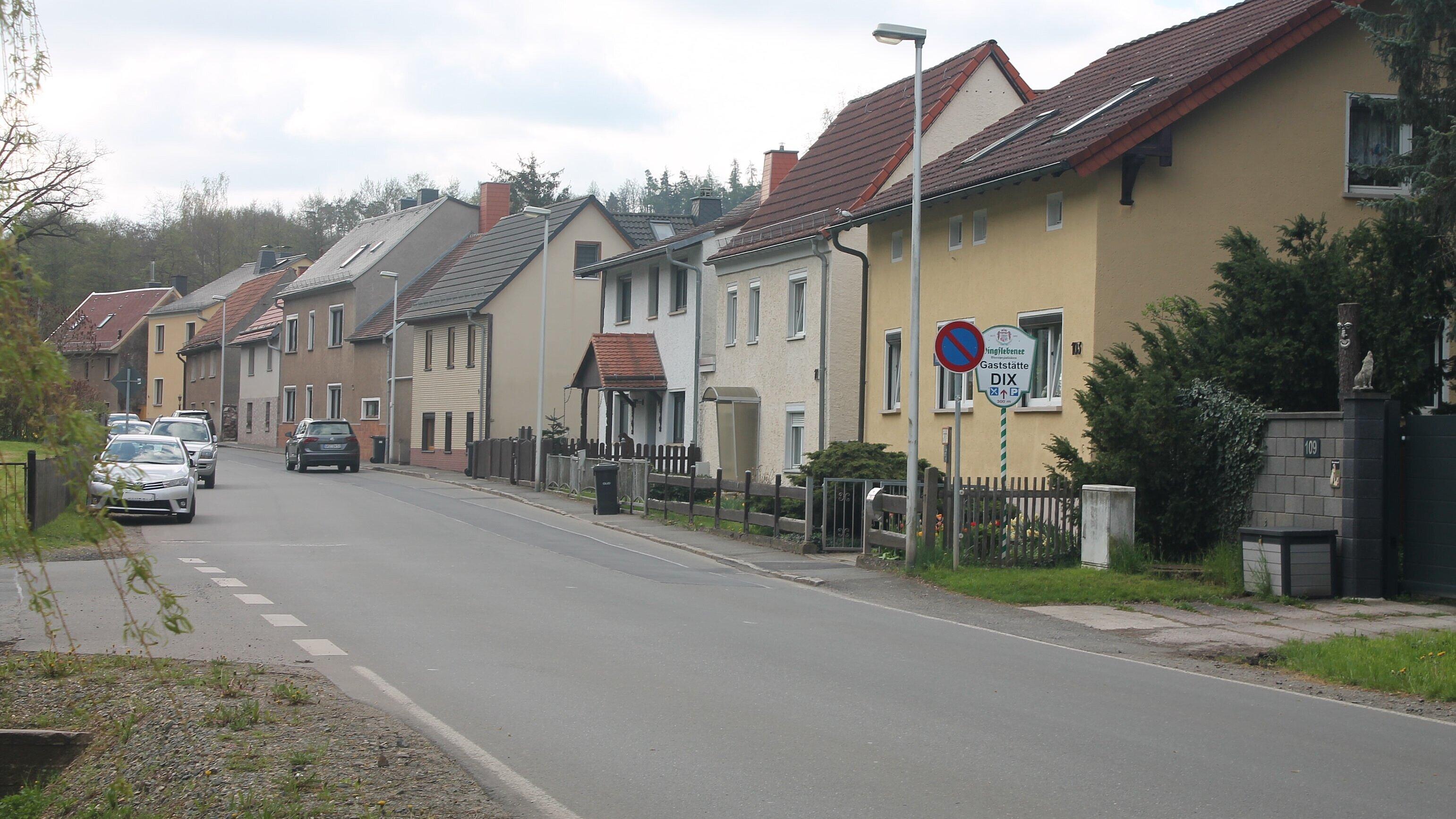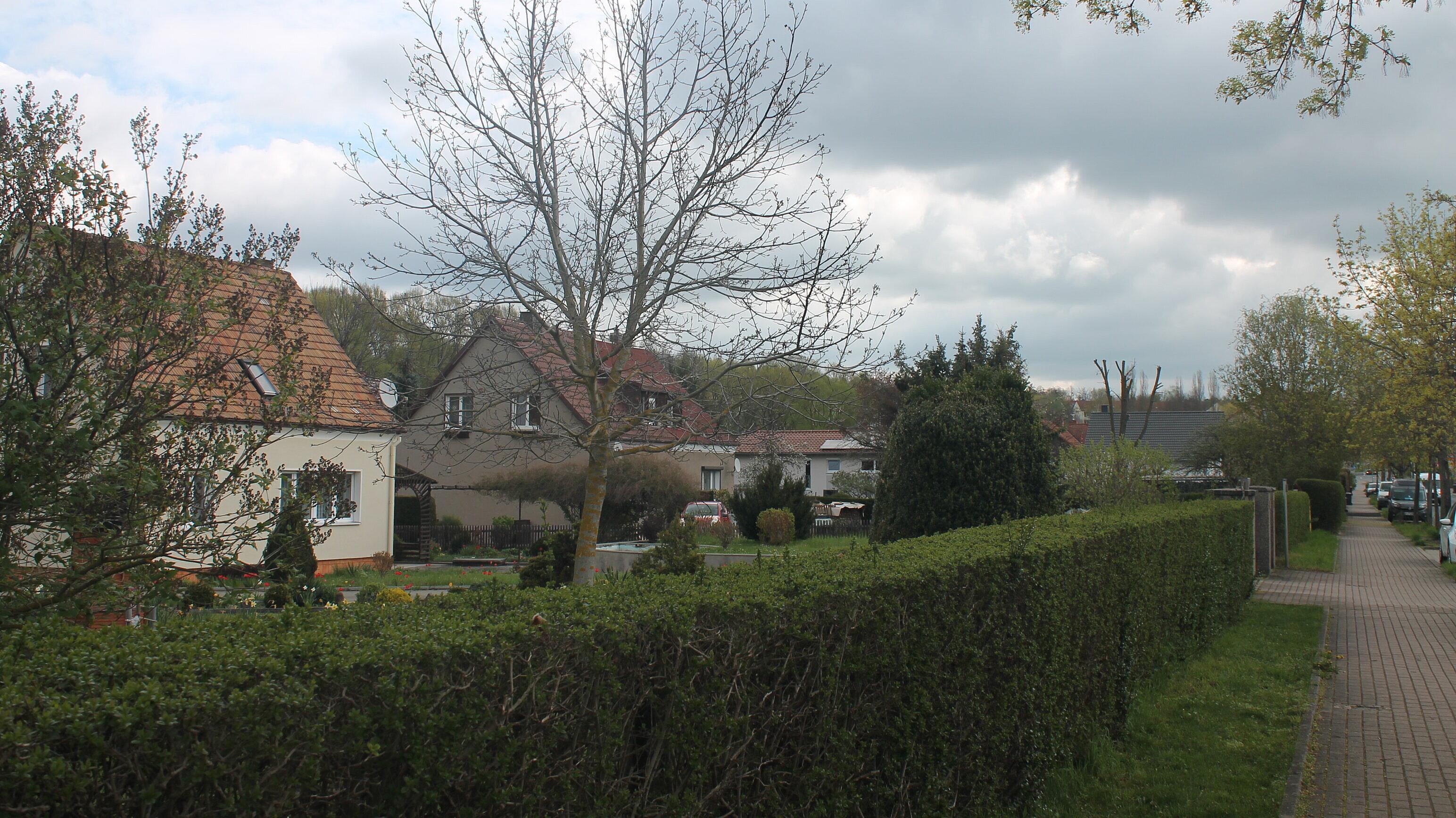District Westvororte
Data and facts:
| Name of the district: | Westvororte |
| with the localities: | Frankenthal, Scheubengrobsdorf, Windischenbernsdorf |
| District of the city of Gera since: | 01.10.1923 |
| Surface area: | 444 ha |
| Population: (as at: 31.12.2022) | 2.173 |
Location and transport connections
| Location: | West of the city forest |
| Utilization: | Preferred residential location Agricultural use |
| Landscape and site design: | The Saarbach valley characterizes the district, surrounded by the wooded heights of the Ernseer Buntsandsteinplatte, the Haardt forest area and the Geraer Stadtwald forest |
| Transport connections: | National road 1076, national road 2324, GVB bus route 17, RVG bus route 222 |
History:
Western suburbs
Since October 1, 2010, Frankenthal and Scheubengrobsdorf have had the status of a district of the city of Gera, into whose urban area they were incorporated in 1923. Located to the west of the city of Gera and the city forest in Saarbachtal, both villages have been connected to the city for a long time. Gera citizens were at times tenants of the manors that existed in each village. Extensions to the town forest and the development of new springs for the town's water supply played a role in the incorporation in 1923.
The villages were first mentioned relatively late, with Frankenthal and Scheubengrobsdorf being mentioned in a deed of sale in 1499. The actual age is probably older, as Frankenthal was also always the parish for a number of villages in the surrounding area. To this day, Ernsee, Töppeln, Windischenbernsdorf and Scheubengrobsdorf are parishes of Frankenthal. The construction of the All Saints' Chapel is mentioned in 1517, a stone slab on the altar shows this date with the name Hans Andres Franck. Scheubengrobsdorf had a rampart in the area of the later manor, which was built there because of the nearby stream. In the immediate vicinity, the "Alte Straße" met the Saarbach from the west. In terms of their form, both villages are street villages, an indication of a German village foundation. The two manors, whose owners changed frequently, were an important point.
In 1896, the town of Gera acquired the Scheubengrobsdorf manor, followed by the purchase of the Frankenthal manor in 1899. A large part of the land in the villages was owned by the manor owners, the farms were less well endowed, one reason for the poverty of the population.
The years of famine in connection with the Seven Years' War particularly affected the families in Frankenthal in 1772, so that the cemetery had to be extended due to the epidemic victims. During the Napoleonic Wars, the Frankenthal band of thieves became very well known in the Principality of Reuss's younger line. Its leader, Joseph Klaunig, was caught in 1819 and spent the rest of his life in the Gera penitentiary and orphanage, now the city museum. One of the gang's meeting places was the Thieves' Oak in Ernsee, not far from the Cold Oak, which was felled in the 1930s. In the 19th century, the rapidly growing industry of the nearby residential town offered good employment opportunities, and around 1900 the population in both towns increased considerably. The structural changes in the villages are still visible today, with some rural buildings disappearing.
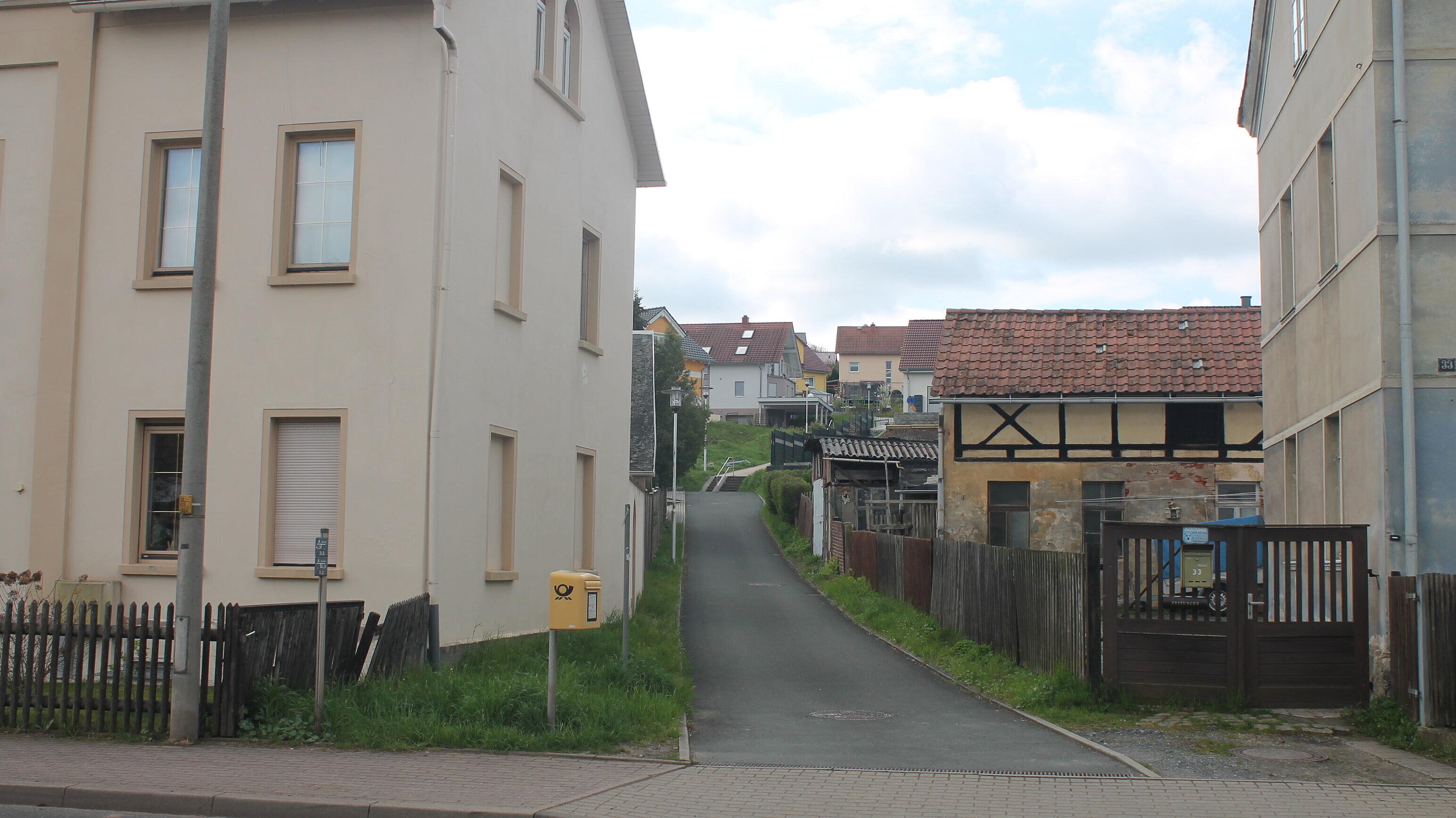
In other places, however, traditional architecture has survived to the present day: the stately mill building can still be seen at the entrance to Scheubengrobsdorf, while in Frankenthal there are some interesting half-timbered buildings on Dorfstraße and the ensemble of school, vicarage and church. The All Saints' Church was built in its present form in 1732 with the help of a state collection in the Principality of Reuss Younger Line. The interior has a simple, closed late baroque form. With the pulpit altar, the town gave itself a special sacred ornament at the time, which documents the Protestant beliefs of the late 18th century. At this time there was still a hammer mill in Frankenthal, the field name Hammerwiese refers to its existence.
In the 19th century, numerous new buildings were constructed, including a rectory and school, as well as the first apartment buildings. This structural development continued and the area of the villages increased continuously over the past hundred years. The growing population brings with it a lively club life.
The cultivation of sociability, music and the incipient interest in sport is pursued in various pubs. The first gymnastics club was founded before 1880, and 1912 marks the beginning of soccer in Saarbachtal. The sports field is inaugurated in 1929.
Today, this tradition is upheld by TSV Westvororte Gera. Of the village festivals, the Frankenthal maypole-setting has survived in particular, but the TSV Westvororte summer festival, the Saarbachtal School Kneipp festival and the Frankenthal vicarage advent have also been added. The school for the western suburbs has been located in Scheubengrobsdorf since 1963. Now an elementary school, this facility is an important meeting point and event venue for the district and numerous clubs and initiatives. With its natural Kneipp concept, the school offers a unique educational concept in the middle of meadows and not far from the forests of Lerchenberg and Hardt. The year 1981 is considered a special turning point in recent history.
In August, a catastrophic flood caused extensive damage to houses and properties. A young firefighter died in the floods. The clean-up work took many months, during the course of which the bed of the Saarbach stream was partially redesigned, new bridges were built and the flood protection system was redesigned in line with the latest findings.
In addition to the elementary school, there are two kindergartens in the district. The Frankenthal volunteer fire department actively trains young people with its youth fire department and makes an important contribution to youth work in the district. The fire station is located in Frankenthal Am Hartmannsberg. The playground was inaugurated in the immediate vicinity in 20212, and the maypole is set on the adjacent parish meadow. In 2016, construction began on a mountain bike trail at Am Schustergraen in Scheubengrobsdorf, which is run by the mountain bike department of TSV Westvororte. Numerous hiking trails open up the large forest areas and connect the Elster Valley with the nearby Thuringian woodland.
